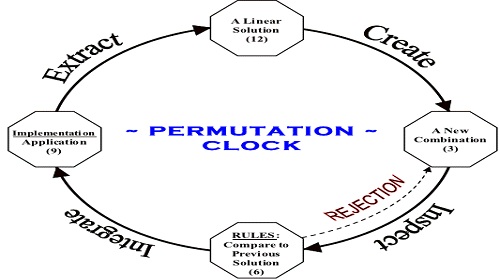Permutations Assignment Help
Permutations Introduction
The Different arrangements of a given numbers of things by taking some or all at a time are called permutation.
Factorial notation: Let n be positive integers. Then the factorial of n is denoted by n! And is defined as: n!= n(n-1)(n-2).......3.2.1

Example:
(i) 5!= (5*4*3*2*1)=120
(ii) 6!=(6*5*4*3*2*1)=720
Number of permutations:
Number of all permutations of n things, taken r at a time is given by:
nPr= n(n-1)(n-2)....(n-r+1)= n!/(n-r)!
Example:

6P2 = (6*5) = 30
Cor. Number of all permutations of n things, taken all at a time =n!
The main reasons for interest in permutations are
- They form a group when we use the operation "followed by."
- Understanding them helps to solve Rubik's Cube.
- There is a theorem due to Arthur Cayley that says that every group is isomorphic to a permutation group.
- Permutations are everywhere whether we know it or not.
An important result:
If there are n objects of which P1 are alike of one kind, P2 are alike another kind, P3 are alike of third kind and so on and Pr are alike of rth kind, such as (P1+P2+P3....+Pr) =n.
Thus, number of permutations of these n objects is:
n!/((P1!).(P2!).(Pr!))
